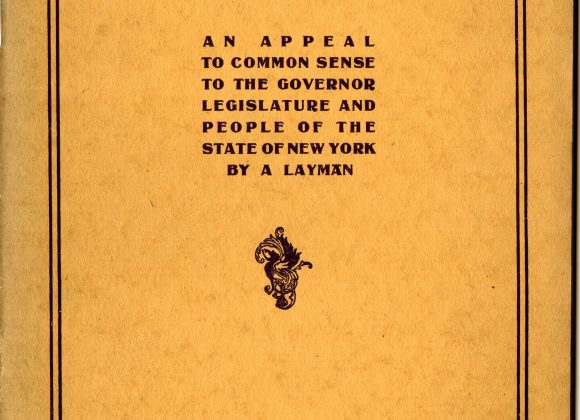This collection of pamphlets reflects the diverse and often fervent opposition to vaccination and public health regulation in the United States during the late nineteenth and early twentieth centuries. Drawn from the Jesse Mercer Gehman Collection, these publications exemplify the rhetoric of medical dissent at a formative moment in American public health history. Jesse Mercer Gehman, a naturopath, physical culture advocate, and prolific health reform writer, assembled materials that document the organizations, ideas, and individuals who challenged the growing authority of biomedicine.
The pamphlets were produced by groups such as the Anti-Vaccination League of America, the National League for Medical Freedom, and the Vivisection Investigation League, as well as independent writers, physicians, and activists. Works including What Is Vaccination? by Walter J. Graves, M.D. (Medical Liberty League, n.d.), Vaccinia and Vaccination by Drs. Archer and Deason (Journal of Sanative Medicine, 1911), Vaccines and Serums Viewed from the Standpoint of Many Physicians (Vivisection Investigation League, 1913), Vaccine and Serum Evils by Herbert M. Shelton (n.d.), and Tuberculosis and Vaccination by Samuel Saloman (Health Culture, 1910) offer pointed critiques of vaccination practices, serum therapies, and immunization research. Other works, such as C. W. Amerige’s The Custom of Vaccination, frame vaccination not only as medically harmful but as a violation of bodily purity and moral principle.
Like earlier titles such as The Case Against Compulsory Vaccination (1907), The Crime of Vaccination (n.d.), or Crimes of the Cowpox Ring (1906), these pamphlets position vaccination as a threat to individual liberty, religious conscience, and democratic self-governance. Many also directly dispute scientific claims, arguing that vaccines caused greater harm than the diseases they were meant to prevent and asserting that medical authorities suppressed contradictory evidence.
Together, these pamphlets illustrate how debates over vaccines, intertwined with questions of class authority, naturopathy, religion, bodily autonomy, and civic freedom, have long shaped American medical culture. Although their claims stand in opposition to contemporary scientific consensus, the collection provides valuable insight into the historical roots of medical skepticism and the enduring tensions between public health policy and personal choice.
Antitoxin; Toxin-Antitoxin; The Schick Test by Eugene Underhill, M.D.
Crimes of the Cowpox Ring by Lora C. Little
Freedom of Choice in the Healing Arts
Inoculation Against the Bubonic Plague by Beddow Bayley
Is Vaccination a Life Insurance Asset or Liability? by George Baudry, M.D.
The Menace of a National Health Bureau by B. O. Flower
Prospectus of The National League for Medical Freedom
The Case Against Compulsory Vaccination by Charles M. Higgins
The Crime of Vaccination by Dr. Benedict Lust
The Custom of Vaccination
Tuberculosis and Vaccination by Samuel Saloman
Vaccine and Serum Evils by Herbert M. Shelton
Vaccines and Serums Viewed from the Standpoint of Many Physicians
Vaccinia and Vaccination by Drs. Archer and Deason
What is Vaccination? by Walter J. Graves, M.D.



